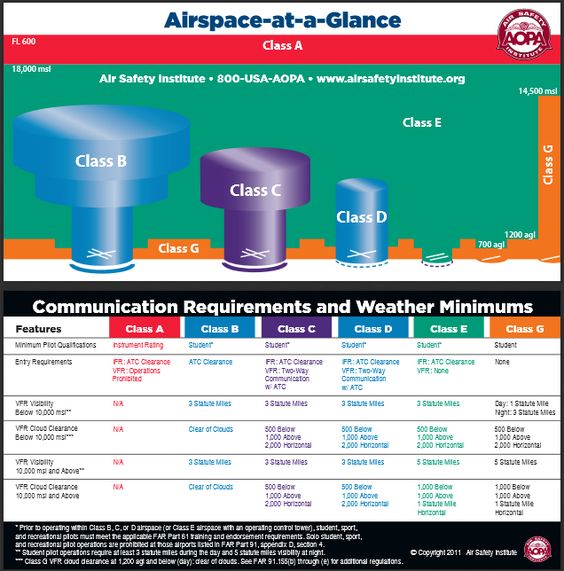LongRoadBob
Cleared for Takeoff
Trying to learn about airspace, and while trying to get this all I got to wondering about the meaning and actual reality of keeping that minimum distance. Please feel free to correct also anything I write below that may be a wrong assumption or idea too.
1) I think other than the idea a VFR pilot should never be flying into a cloud, the distance from idea is because an IFR plane may suddenly be coming out of clouds, is that the main point with minimum distance from clouds?
2) How do you learn to judge distances like that with no reference except clear air between?
Does this come with time? Also 500' below clouds seems hard to judge, but also 1000' above (I'm guessing one or the other?) and 2000' horizontally, I don't know how to judge.
3) "VFR daytime, below 1200' AGL (regardless of MSL) Clear of clouds" means exactly that? No clouds in the sky? Of course one has to take off, being less than 1200' in order to climb above 1200'...
Sorry if these are really dumb questions. I'm trying to get a handle on airspace regulations, how to know you comply, and the classes of airspace. I've been trying to memorize these but realize looking at the spreadsheet (FAA) is the wrong way. Decided to mentally go from G up over in my head to try and see for myself the changes that one has to think about. Even the FAA chart over airspaces doesn't include if a transponder is required, and if it must be mode C type.
To make it worse, though the best information is for US airspace I'm in Norway where as far as I can tell they do not use classes B or E, and A is only used around ONE area (Bodø) from FL195 up.
I think I have to make my own chart and fill it in so I don't learn the wrong rules.
Thanks for any help!
1) I think other than the idea a VFR pilot should never be flying into a cloud, the distance from idea is because an IFR plane may suddenly be coming out of clouds, is that the main point with minimum distance from clouds?
2) How do you learn to judge distances like that with no reference except clear air between?
Does this come with time? Also 500' below clouds seems hard to judge, but also 1000' above (I'm guessing one or the other?) and 2000' horizontally, I don't know how to judge.
3) "VFR daytime, below 1200' AGL (regardless of MSL) Clear of clouds" means exactly that? No clouds in the sky? Of course one has to take off, being less than 1200' in order to climb above 1200'...
Sorry if these are really dumb questions. I'm trying to get a handle on airspace regulations, how to know you comply, and the classes of airspace. I've been trying to memorize these but realize looking at the spreadsheet (FAA) is the wrong way. Decided to mentally go from G up over in my head to try and see for myself the changes that one has to think about. Even the FAA chart over airspaces doesn't include if a transponder is required, and if it must be mode C type.
To make it worse, though the best information is for US airspace I'm in Norway where as far as I can tell they do not use classes B or E, and A is only used around ONE area (Bodø) from FL195 up.
I think I have to make my own chart and fill it in so I don't learn the wrong rules.
Thanks for any help!


